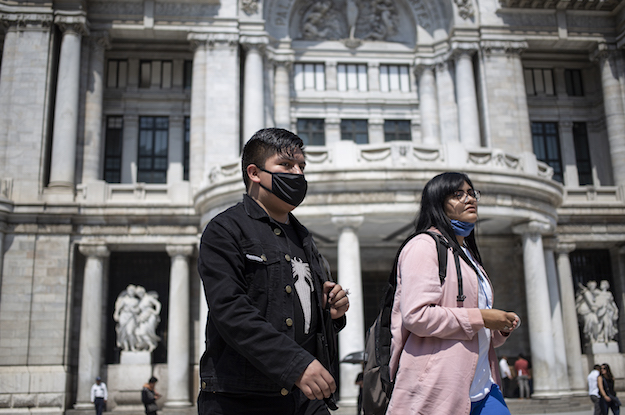This article has been updated
The hurricanes that battered the Caribbean this summer left few communities untouched. But the approximately 4.4 million people living in low-elevation coastal zones (LECZs), coastal areas less than 10 meters above sea level, paid a particularly heavy price. Hurricane Irma, for example, destroyed homes throughout the Turks and Caicos, where 85 percent of the population lives in LECZs.
Low-Elevation Coastal Zones (LECZs) in the Caribbean
The aftermath of Hurricanes Harvey, Irma and Maria renewed calls to fortify LECZs in the Caribbean. Plans underway include wetlands restoration, the construction of breakwaters or, most popularly, updating building codes. Proponents of this last idea point to Florida as an example of what updated codes can achieve; after Hurricane Andrew in 1992, the state increased enforcement and instituted new building codes that have since reduced insurance claims and minimized the destruction of hurricane-force winds. Grand Cayman has drawn similar attention given its adoption of the Southern Building Code Congress International (SBCCI) Standard Building Code in 1995, which lessened the impact of Hurricane Ivan in 2004.
But while building codes indeed are a key driver of resilience, their impact should not be overestimated. Three conditions need to be in place to ensure that they fulfill their potential.
Revise regularly
Each hurricane season provides a laboratory for climate modelers to test standards for hurricane-resistant windows, foundations and roofs. The unprecedented maximum gust speed of Hurricane Irma (185 mph) exceeded the Organization of Eastern Caribbean States (OECS) building code regulations for Antigua & Barbuda Anguilla, British Virgin Islands, St. Kitts & Nevis, and Montserrat. As we look to the future, codes may need to accommodate higher wind speeds given the increasing size and magnitude of hurricanes. Building codes should not be viewed as static tools, but as living documents that adjust to new information on hazard modeling and rain fall.
Support climate-smart coastal development
Enforcement is critical. Urban planning institutions with adequate staff are urgently needed to review building proposals and inspect structures during construction. The experience of urban planners who tend to focus only on the built environment needs to be complemented with the experience of a new generation of professionals trained in hydrology, coral reef monitoring and coastal conservation. A recent publication by the Inter-American Development Bank (IDB), A Blue Urban Agenda: Adapting to Climate Change in the Coastal Cities of Caribbean and Pacific Small Island Developing States, provides examples of how city officials in the Caribbean are including this new perspective in urban planning.
One of those examples is Barbados’ Town & Country Development Planning Office, which has established coastal landscape protection zones to prevent development in erosion-prone coastal cliff areas and to protect from the impacts of extreme storm events. Planners are also evaluating construction permits using a ridge-to-reef concept that takes into account the impact of development on tidal zones, reefs, and seagrass beds. Likewise, planners in riverside cities such as Paramaribo are funding new linear parks that similarly control for flooding and provide vibrant public spaces.
Climate-proof existing buildings
A shortcoming of building codes when it comes to disaster preparedness is that they are often only applied to new construction in the formal market. Older structures are exempt from new rules and informal settlements are often overlooked. But low-income groups often settle in areas prone to flooding, such as wetlands and riverbanks. Indeed, more than half of the squatter settlements in Kingston, St. Andrew and St. Thomas, Jamaica are within 100 meters of a waterway susceptible to flooding.
The reconstruction of Haiti following the 2010 earthquake underscored the need to support local masons and builders with the tools and equipment they need to truly enable housing self-recovery. We must avoid cultivating isolated islands of excellence and instead promote neighborhood-based interventions that take into account beneficiaries’ needs and financial resources. As the study on post-disaster shelter response in Haiti, What Did We Learn?, declares, “the challenge is not to build houses, but to provide housing options that are economically and socially sustainable for both owners and occupants.” Guyana offers an excellent example of this approach as officials help residents improve building standards of existing homes over time. Through these efforts, the Government of Guyana has partnered with community-based organizations to improve 20,000 homes.
Beyond concrete and mortar, building resiliency in these areas also requires a sensitivity to the Caribbean’s overlapping land tenure systems, which include a centuries-old family land system that emerged from collective rights given by emancipated slaves to their descendants, informal settlements on private or state-owned land, and a modern system of titled properties in complex property registries. Efforts to recognize the continuum of land tenure, such as Trinidad & Tobago’s Certificate of Comfort, which provides land rights to occupants on state land, can open the door to climate-proofing these homes.
Preventing future destruction by hurricanes will require a serious commitment to coastal governance that transcends the false dichotomy that divides land from sea and an Urban Development Ministry from an Environment Ministry. Better coastal planning now will ultimately reduce the cost of future reconstruction and ensure a more inclusive discussion around resilience.
This article was updated to clarify the effects of Hurrican Ivan on Grand Cayman
—
Donovan is a senior housing and urban development specialist at the Inter-American Development Bank (IDB).
* The opinions expressed in this publication are those of the authors and do not necessarily reflect the views of the Inter-American Development Bank, its Board of Directors, or the countries they represent.








